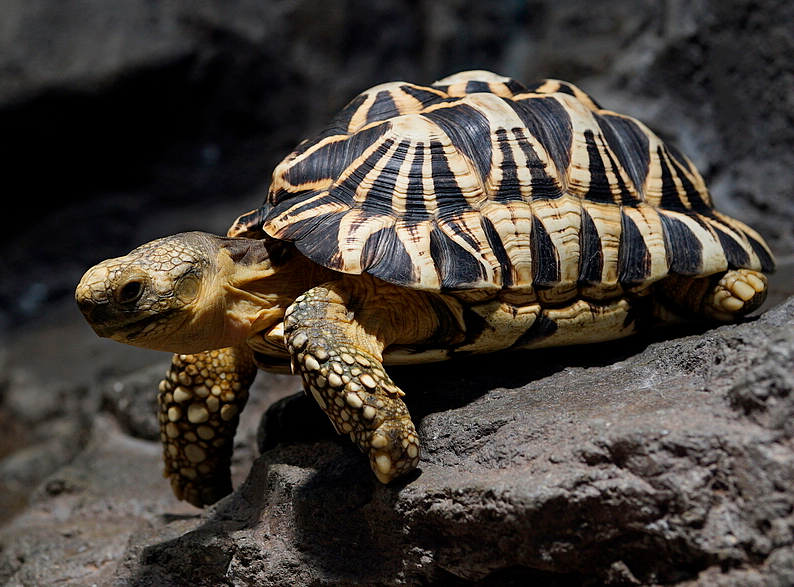The Burmese Star Tortoise Is Back From the Brink of Extinction
A meteoric return for a slow and steady reptile.

The outlook seemed bleak for the Burmese star tortoise. Extinction appeared virtually certain for the creature as recently as 2004. In the decade before, it had become a star attraction in the southern China black market for exotic pets. Local Myanmar families, if they found one, could earn a finder’s fee large enough to feed a family for a year—if they managed to avoid the seven years of jail time. But times are changing for this little reptile, which is somewhere in size between a large hamburger and a small football. An aggressive captive-breeding effort has seen populations explode to 14,000 leaf-guzzling specimens, each with a distinctive star pattern on its shell, according to a recent paper in the journal Herpetological Review.
These tortoises are native only to Myanmar’s central dry zone: in 2003, a survey team took nearly 1,000 hours to find a single tortoise, making it ecologically extinct in the wild. Together with a global conservation network called the Turtle Survival Alliance, the Wildlife Conservation Society joined forces with the Myanmar government to try to save the species. A captive breeding program was set up at three local wildlife sanctuaries. Steven Platt, study author and herpetologist with the program, said, in a statement, “This is the modern day equivalent of saving the bison from extinction.” Similar programs have also been used in the United States to save condors or wolves.
The team started the colonies with around 175 tortoises, mostly confiscated from exotic animal traffickers. They were supported by a battalion of herpetologists, molecular scientists, and veterinarians from the Bronx Zoo. Now, 750 animals have been released from the breeding centers into wild areas of the sanctuaries. These initial animals are on their own and political and social challenges rage in the background. Until they have been resolved, and the risk of poaching reduced, the other 13,000 or so tortoises will remain in captivity.
In the meantime, the tortoises are aggressively guarded. Theft remains a constant threat, with at least 200 stolen from the program so far. To prevent break-ins, the tortoises are now guarded round-the-clock by staff members, and kept in 10-foot concrete enclosures with concertina wire looped over the top.
Nonetheless, the project has been a triumph, surprising even its strongest supporters, who call it a “model chelonian conservation success story.”
“If you had told me more than 10 years ago when the project started that we would have more than 10,000 Burmese Star tortoises, and that we would have returned nearly a thousand to the wild, I wouldn’t have believed it,” said Andrew Wilde, from the Turtle Survival Alliance, in a statement. “It is success stories like this that make all the hard work worth it.”
















Follow us on Twitter to get the latest on the world's hidden wonders.
Like us on Facebook to get the latest on the world's hidden wonders.
Follow us on Twitter Like us on Facebook